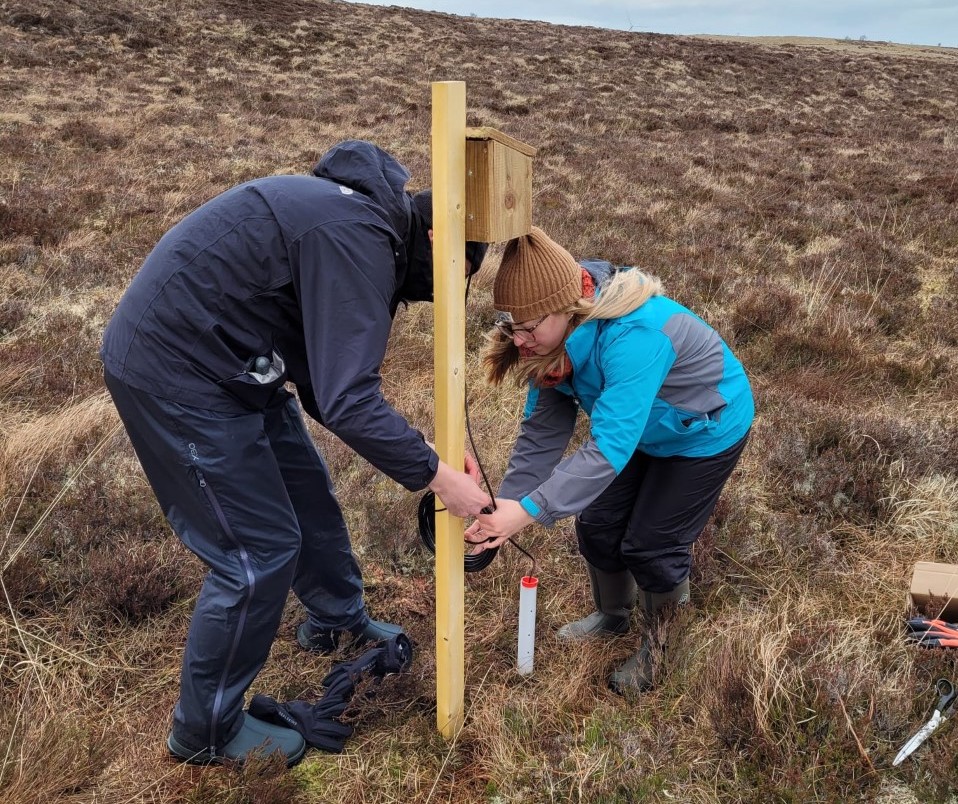A pilot project to monitor the health of Scotland’s peatlands using internet of things (IoT) sensors is being extended thanks to its ‘significant success’.
Trials carried out in the Western Isles have allowed researchers to capture vital information about peatlands that could help in restoration efforts after signs of degradation.
The Scottish Government-funded study, which monitored a remote area of peatland in the Western Isles over 12 months, was initiated and carried out by digital connectivity specialist FarrPoint in collaboration with NatureScot Peatland ACTION, the Carloway Estate Trust, Scottish Water and Scottish Futures Trust.
The pilot – which recently picked up the ‘Product/Service Innovation’ award at ScotlandIS’s Digital Technology Awards – used ten strategically placed IoT sensors to capture reliable real-time information on the water table dynamics at the degraded peatland prior to restoration.
Functioning peatlands usually have a water table close to the ground surface throughout the year, and water table dynamics are an important indicator of overall peatland condition. NatureScot Peatland ACTION now aim to continue the monitoring during and after peatland restoration at the site in order to evaluate restoration outcomes.
The Peatlands Monitoring Dashboard developed by FarrPoint displayed the information gathered by the sensors, providing an accurate source of data with no need for anyone to physically visit the remote site after installation.
Dr Andrew Muir, CEO at FarrPoint said: “Many people don’t realise how vitally important peatland is to the environment. As well as supporting biodiversity, Scotland’s peatlands store 1.7 billion tons of carbon – the equivalent of around 140 years of the country’s annual greenhouse gas emissions.
“If peatland gets damaged and dries out – and at present, an estimated 80% of Scotland’s peatland is damaged – it releases a huge amount of CO2 into the atmosphere, making the problem of climate change even worse.”
Monitoring peatland water table dynamics can be a costly and time-consuming manual task, requiring regular travel to monitoring stations in often remote locations, some of which are only accessible on foot.
A comprehensive evaluation of the pilot found the technology could result in:
- a reduction in the cost of monitoring the peatland site.
- a reduction in the environmental impact of monitoring by removing the need to travel to the site, as well as reducing the disruptive impact of visits on the natural peatland.
- an improvement in the quality and timeliness of the monitoring data.
- an enhanced ability to remotely monitor issues with sensors.
Based on this success, NatureScot has now confirmed additional funding to allow the project to continue for another year, with a view to potentially rolling the technology out to other locations in future.
Lucy Elliff, Peatland ACTION monitoring officer at NatureScot said: “Restoring healthy peatlands is a crucial aspect of Scotland’s efforts to address the climate and biodiversity emergencies. This pilot is an example of the innovative and collaborative ways in which we can monitor peatland restoration outcomes and support the delivery of the Scottish Government’s commitment to restore 250,000 hectares of peatland by 2030.
“The evaluation of the trial found that IoT sensors offer a viable solution for peatland monitoring in certain situations, so this additional funding will allow the project to continue in its existing location. This will enable us to further evaluate the technology over the full lifetime of a restoration project and consider the potential to roll it out at other sites across Scotland. This could offer a cost-effective way to gather high-quality, real-time data on peatland condition in remote locations, while reducing the need for costly in-person visits.”
Scottish Government innovation minister Richard Lochhead said: “The success of remote peatland monitoring in hard to reach areas, enabled by the Internet of Things, shows the potential this technology can have and the benefits it can realise.
“Our digital programmes and interventions are helping to address complex challenges, particularly in more rural parts of Scotland, and enabling progress towards net zero ambitions.
“We continue to work with partners to support the adoption and scaling up of IoT technologies across Scotland.”
Jared Stewart, Scottish Water’s technical lead for the sustainable land management and abstraction team, said: “People may be surprised to learn that around 70 per cent of Scotland’s public drinking water has a start in peatland. By restoring damaged peatland, we aim to protect and improve the quality of the source water received by our treatment works, as well as provide the co-benefits of carbon capture and increased biodiversity.
“We are pleased that our contribution of restoring the peatland around Loch Orasaigh has led to a successful pilot of utilising ‘Internet of Things’ sensors and remote digital connectivity that provides real-time data”.
